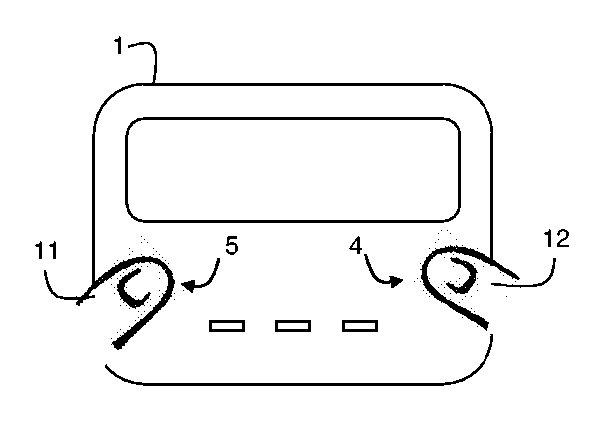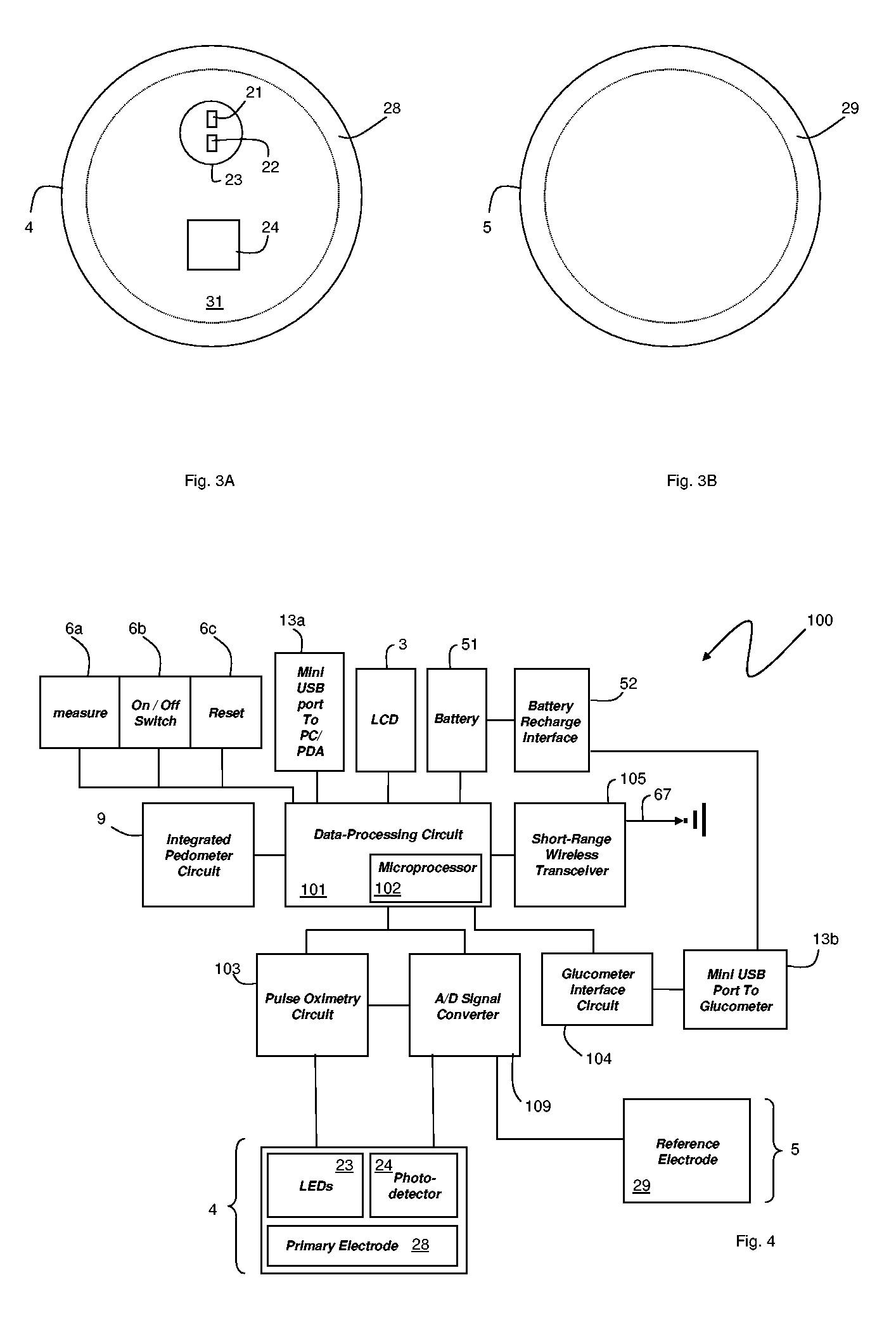Hand-held monitor for measuring vital signs
a technology of vital signs and monitors, which is applied in the field of medical devices for monitoring vital signs, can solve the problems of inaccurate diagnosis, white coat syndrome, affecting blood pressure, etc., and achieve the effect of high blood pressure and easy operation throughout the day
- Summary
- Abstract
- Description
- Claims
- Application Information
AI Technical Summary
Benefits of technology
Problems solved by technology
Method used
Image
Examples
Embodiment Construction
[0020]FIGS. 1A and 1B show a portable, hand-held vital sign monitor 1 that measures a patient's systolic and diastolic blood pressure, pulse oximetry, and heart rate using a pair of ‘pad’ sensors 4, 5 mounted on the monitor's top surface 7. As shown in more detail in FIGS. 3A, 3B, the second pad sensor 4 features an optical source 23 that includes red 21 and infrared 23 LEDs that irradiate a patient's finger, and a photodetector 24 that detects reflected radiation to generate a time-resolved optical signal 17. The second pad sensor 4 also includes an electrode 28 shaped as an annular ring that, when coupled with a reference electrode 29 in the first pad sensor 5, generates a time-resolved electrical signal 18. An algorithm (described in detail below) operating on a microprocessor within the vital sign monitor 1 processes the time-resolved optical 17 and electrical 18 signals to determine the patient's blood pressure, heart rate, and pulse oximetry.
[0021] In addition to these proper...
PUM
 Login to View More
Login to View More Abstract
Description
Claims
Application Information
 Login to View More
Login to View More - R&D
- Intellectual Property
- Life Sciences
- Materials
- Tech Scout
- Unparalleled Data Quality
- Higher Quality Content
- 60% Fewer Hallucinations
Browse by: Latest US Patents, China's latest patents, Technical Efficacy Thesaurus, Application Domain, Technology Topic, Popular Technical Reports.
© 2025 PatSnap. All rights reserved.Legal|Privacy policy|Modern Slavery Act Transparency Statement|Sitemap|About US| Contact US: help@patsnap.com



